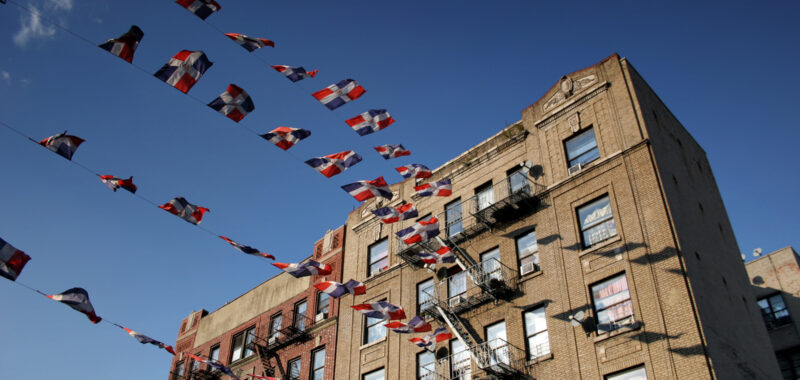New York City is getting its first center for Dominican arts and culture, State Governor Kathy Hochul announced last Sunday, August 11, during the Dominican Day Parade.
The City University of New York’s Dominican Studies Institute (CUNY DSI) will helm the development of the free-entry institution, which will include an exhibition space for works by Latine artists; a theater for music performances, screenings, and lectures; and a studio to record oral histories of Dominicans in Washington Heights. The center, supported by a $12.5 million commitment from Hochul, will also feature a children’s library operated by the New York Public Library offering books and materials in Spanish.
The Dominican Center for the Arts and Culture will open in 2026 in the Washington Heights/Inwood area of Manhattan, according to Ramona Hernández, director of CUNY DSI.
“This is a very old dream of the Dominican people,” Hernández told Hyperallergic. “The idea was, and is, to create a space to celebrate the arts and culture of people of Dominican ancestry.”
Dominicans represent the largest Latine subgroup in New York City, surpassing Puerto Ricans in 2020. According to Hernández, more than one in two residents of Washington Heights has Dominican ancestry.
United States Representative Adriano Espaillat, who was born in the Dominican Republic and is the first formerly undocumented immigrant to serve in Congress, added at the parade press conference that the newly secured state funding brings the total public investments raised for the project to nearly $38 million.
“There is a pressing need for a Dominican cultural center to recognize and celebrate the contributions of our community,” Espaillat said.
Espaillat’s office did not respond to an inquiry from Hyperallergic to elaborate on the source of the additional public funding.

Washington Heights, dubbed “Little Dominican Republic,” is celebrated as a site of Dominican heritage in Lin-Manuel Miranda’s musical In the Heights (2005) and New York City’s annual Dominican Day Parade, among other artworks and events. But the neighborhood does not yet have a dedicated public Dominican arts and culture institution.
“Washington Heights happens to be the place that holds this historical memory,” Hernandez told Hyperallergic. “This is where we came for the first time. This is where we have grown into who we’ve become.”
Hernández said the space will be of the caliber of the New York Historical Society and Morgan Library and serve the needs of the city’s Dominican communities, including through bilingual English-Spanish resources.
“Everybody in that space will remind you of the value in the legacy of keeping and preserving and sharing that language,” Hernández said.
Hernández attributed a lack of cultural documentation thus far to an inability to capture the oral histories of older Dominican women. “[Many] Dominican women do not write diarios (diaries),” she explained, “and because of that, the contribution of Dominican women and people in this community is lost.”
The center will include a recording studio to capture these stories. At the center of the oral history interviews, Hernández said, is the question: “How did this community emerge at a moment when immigrants were not necessarily welcome?”
Hernández emphasized that the arts complex will not supplement any existing Dominican cultural institutions, but will instead be entirely new in its breadth and scope.
“This is what has been missing,” Hernández said.

